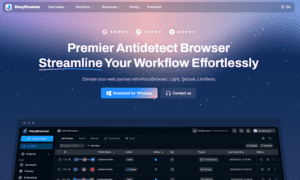By Dr. Vikas Katoch, Founder and CEO, Adomantra
“We’re no longer watching television. We’re interacting with it, personalizing it, and in many ways, controlling it. This shift has massive implications for digital business.”
As someone who has spent nearly two decades working at the intersection of media, advertising, and emerging technologies, I’ve had a front-row seat to one of the most exciting transformations in modern communication: the evolution of television.
Today, the way we distribute, consume, and monetize TV content is no longer just about programming, it’s about platform data and direct audience engagement. In this piece, I’ll break down how TV distribution changes are reshaping business models, ad strategies, and even brand identities.
From Broadcast to Broadband: The Evolution of Television in the OTT Era
Television was once a fixed, time-bound experience, dominated by cable and satellite. But that model is fading fast. The modern viewer now streams content across multiple devices, at their own pace, on their own schedule.
We’ve officially entered the broadband-first era. With over 1.8 billion global OTT subscriptions, and OTT and ads driving more than 38% of global video consumption, it’s clear the old broadcast world has become a digital playground.
Recommendation engines, mobile-first access, and binge culture aren’t trends; they’re the new infrastructure.
OTT and Ads: A New Frontier in TV Distribution Changes
By late 2018, over 1.1 million U.S. households had abandoned traditional cable services. This number has only ballooned since.
I see this trend replicated across Asia, Europe, and Latin America where affordable smartphones and cheaper data have made OTT the default for young audiences. The modern viewer doesn’t want to be tied to time slots or remote controls. They want frictionless, anywhere-anytime access.
This shift is not just behavioral. It has triggered a redistribution of advertising budgets, content strategies, and even media ownership models. Today, brands are partnering with programmatic advertising agency to navigate this complex terrain, leveraging real-time bidding and data-driven insights to reach fragmented yet highly targeted audiences across CTV, OTT, and hybrid platforms.
Linear TV Isn’t Dead But It’s Evolving
Many people often ask me: “Is traditional television dying?” My answer is simple no, it’s evolving.
We’re currently witnessing a transition from rigid, time-bound TV schedules to a more flexible, blended model. This transformation is giving rise to what I call hybrid television, where linear broadcast and digital streaming coexist and complement each other. It’s not the end of linear TV, it’s the reinvention of it.
Let’s break down the key formats driving this change:
- FAST (Free Ad-Supported Streaming TV):
These are digital channels that mimic traditional linear programming but are delivered over the internet and supported by ads. No subscription fees, no cable box, just curated real time programming streamed through connected devices. Think of it as cable without the cost. Platforms like Pluto TV, Tubi, and Samsung TV Plus are prime examples. - HbbTV (Hybrid Broadcast Broadband TV):
Popular in Europe, HbbTV combines traditional broadcast with broadband internet. Viewers can watch linear TV but also access interactive content like voting in live shows, catching up on missed episodes, or seeing additional info via internet-connected features. This model allows broadcasters to stay relevant in the connected age. - IPTV (Internet Protocol Television):
Delivered over IP networks, IPTV provides linear TV in a digital format, often bundled with broadband services. It allows features like catch-up TV, start-over options, and on-demand libraries while maintaining a live programming structure. Telcos and DTH providers are increasingly integrating IPTV into their offerings.
These hybrid models serve two core purposes:
- They keep the familiar feel of traditional TV watching, which many viewers, especially older ones, still like.
- They open the door to interactivity, personalization, and data-driven content delivery hallmarks of the streaming age.
Platforms like Roku, Samsung TV Plus, and Pluto TV exemplify this shift. They’re reaching a growing audience of cord-cutters viewers who’ve left traditional cable but still enjoy the lean-back, channel-surfing experience of linear TV.
As someone who’s tracked this space closely, I see this evolution not as a disruption, but as a strategic pivot. Broadcasters aren’t being replaced but they’re being reimagined.
Linear TV isn’t obsolete. It’s just found a new pipe, and a smarter playbook.
The Digital TV Business Impact: What It Means for Brands
Here’s where the real opportunity lies. As content distribution evolves, businesses across industries must understand and adapt to its ripple effects. The digital TV business impact extends far beyond media companies, influencing how brands advertise, sell, and engage across every screen.
1. Hyper-Personalized Advertising
Streaming platforms monitor user actions like clicks, pauses, and viewing habits. This lets advertisers target audiences with precise real time accuracy something traditional TV could not offer.
2. Data-Informed Content Investment
Studios no longer rely solely on intuition or test screenings. Using performance data (watch time, drop-off rate, regional demand), they create what I call “data-native content” that is built for engagement from the start.
3. Ad-Supported Models Gain Ground
Subscription fatigue is real. Ad-supported OTT platforms (like Amazon’s Freevee or YouTube TV) are drawing users and advertisers alike. In fact, ad-supported streaming platforms outperformed cable ad revenue in several markets in 2024.
4. Shoppable & Interactive TV
TV ads are no longer passive. Audiences can click-to-buy products seen on screen, engage in real-time polls, or even customize storylines. This isn’t sci-fi—it’s live today on platforms like Instagram Live, YouTube, and Amazon Prime.
India’s Digital Distribution Leap: A New Era in Media and Entertainment
India is perhaps the most fascinating example of digital distribution evolution.
- In 2024, digital video revenue overtook television ad revenue in India, emerging as the largest segment in the country’s Media & Entertainment (M&E) sector, as per the FICCI-EY report.
- OTT platforms now produce content in over 20 Indian languages.
- Over 70% of viewership happens on mobile, not on large screens.
As I’ve observed, India hasn’t just adapted, it has leapfrogged. Telecom integration, affordable internet, and a mobile-first population have created the perfect conditions for a hybrid, hyperlocal media ecosystem.
Technologies Driving the Future of TV Distribution
Looking ahead, a few technologies stand out:
AI & ML
Recommendation engines will go beyond “you may also like” to predict what you’ll love based on not just behavior, but sentiment, time of day, even facial cues in some cases.
5G
With ultra low latency, 5G enables live sports, multiplayer gaming, and real time interactivity at scale, turning TVs into social hubs.
Edge Computing
Content will be cached and served from local nodes, improving streaming quality in low-connectivity areas and making digital TV more inclusive.
Key Lessons for Business Leaders
As I often advise industry stakeholders, this transformation is not limited to media companies.
- Retailers can become broadcasters. Think Myntra Live or Amazon MiniTV.
- Education platforms must rethink delivery. Lecture videos are TV content now.
- Automotive, healthcare, and BFSI must explore brand storytelling via OTT channels, not just ads, but owned shows.
TV isn’t dead, it’s everywhere. And it’s talking back.
In Closing
The TV distribution changes we’re seeing today are not about platforms, they’re about participation. As an industry expert, I view this as a defining moment for every business leader.
Understand the medium. Own the narrative. Create value.
Television is no longer just watched, it’s interacted with. Those who embrace this shift will shape the next decade of digital business.
If you’re exploring how to adapt or lead in this space, I’m open to meaningful conversations and collaborative models.
Media Contact:
www.adomantra.com
connect@adomantra.com
+91-965-070-6427
+91-931-166-9643





























